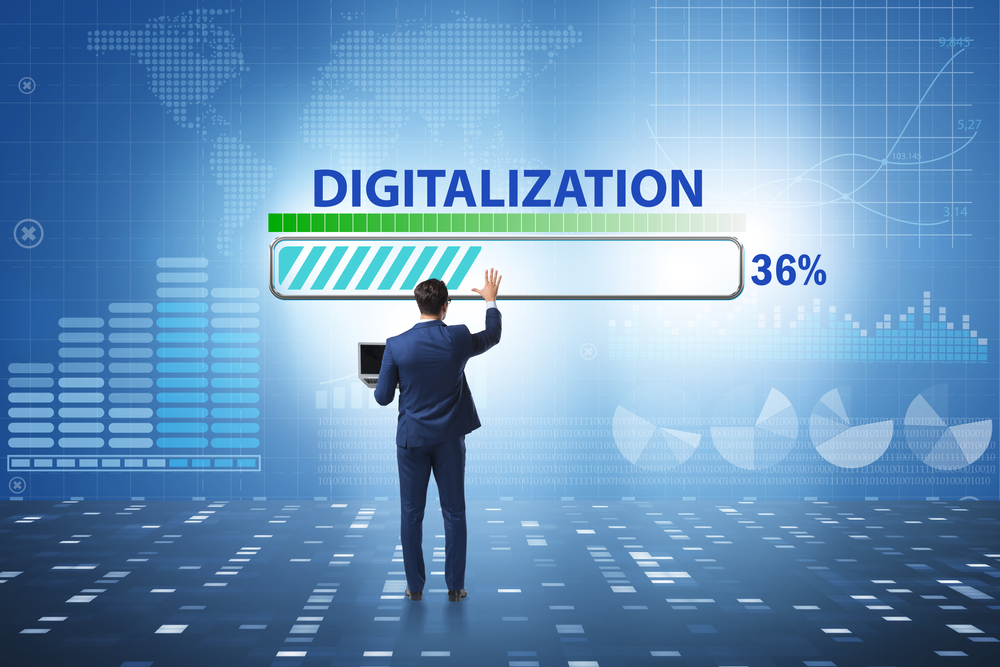The Dawn of Digitalisation
7 April 2022
Recent HSME article authored by Patrick Gex (VP Product NiSoft) on how software is changing to meet the needs of the digital workforce.

Whether you currently have deployed a digital solution as part of your EHS (Environmental, Health and Safety) landscape or you are just beginning your journey of finding and selecting a solution for your company, you will have found that the marketplace is full of options for various parts of your EHS program.
With high expectations and constant pressure from a younger and savvy digital workforce, the rapid development of digital equipment such as computers and mobile devices, coupled with inefficiency in plant processes, requirements for better data sharing and visibility, problems with personnel engagement, and a raft of other conditions, are increasing pressure on EHS and other departments to digitalize and centralize solutions for the workforce.
Many companies have taken this opportunity as a positive step to support and engage with their increasing and demanding workforce, digitally engaging them on EHS solutions. The answer to most of the demand has been to look towards technology and solution in the digital space, which could be summarised in one word: DIGITALIZATION. Digitalization affords companies the opportunity to provide the workforce the solutions to the demands that they have and also for the company a solution that enhances efficiency, increases productivity, improves personnel and plant safety, and heightens visibility on compliancy. It is a “win-win” situation for both the workforce and management, as corporate objectives to increase visibility, increase engagement, increase compliance and increase efficiency – all without affecting safety performance negatively can be achieved by rolling out the correct type of digitalization project.
Saving time, better allocating and managing work and personnel, enhancing process sharing and visibility, minimizing risk, and integrating easily with established existing systems (CMMS, DCS, Reporting, and Data Historian) are key digital solution attributes that decisions makers are looking for in considering a corporate solution.
This article looks at some aspects affecting both the company and the workforce as software solutions for a digital workforce to support EHS programs and improvements become more of a prominent conversation within the industry today.
Increasing Expectations
With the growth of digitalization in so many aspects of everyday life, the expectation of modern, beneficial, and user-friendly technology solutions to be available in the workplace has risen sharply recently. The average worker comes with high expectations of what the company or employer will provide technology-wise to complement and improve the various aspects of their job and daily tasks. Given most employees will have a reasonably modern and expensive Smartphone, easily and continuously connected home devices such as thermostats, audio or video devices, car accessory devices such as GPS equipment, wearable technology such as watches and headphones, they expect to use similar technologies and have similar constant and real-time connectivity and data delivery in the workplace.
Such expectations of the workforce tend to drive companies towards acquiring digital solutions in all areas including EHS. Plant personnel expects up-to-date necessary reliable information from many and varied sources to make better-informed decisions at the point of work while performing their daily tasks in a compliant and consistent manner in line with the site safety rules. This is not limited to Operators on the shop floor but also extends to Production and Maintenance Engineers, Managers, and C-Level Executives who need to react to events as they happen and make timely critical decisions based on available information such as leading indicators, trends, and gathered data from the field. Therefore, a centralized digital solution becomes a high priority, where all necessary information and processes from a variety of sources are gathered reliably and are readily available to all relevant plant personnel in a timely fashion. Being able to rely on the accuracy and compliant nature of the data received through a technology-based solution is critical to making the solution effective for the organization at large.

We all could remember a time when a paper-based approach to recording and retrieving information was suitable for a variety of tasks. As an example, paper-based logs would be used for recording and retrieval of information such as a Station Log, Unit Log, Control Room Log, or Operations log accessible from only one specific physical location, this was seen as an acceptable means for people to record critical events during their shift, and perform an efficient shift handover. Information required to mitigate the risks of unfamiliar changes, or even current plant conditions was only available from one location and often difficult to read or find and required a trip to the physical location where the log was kept. In the digital age, enabling plant personnel to perform data collection and recording critical information on digital devices, then automatically sending that information to predefined digital logs, with all the checks and balances that a software solution provides, significantly increases the quality and reliability of the data, the availability in real-time of the data, and the accessibility of the data from a variety of locations. Armed with all this robust and reliable data collection method and the resultant information, plant personnel can now make better-informed decisions at the point of work.
Don’t forget Mobility
The world has gone mobile, if you doubt that statement look around you while commuting to work, taking a leisurely stroll in the park, or even eating in a restaurant, everyone is on a mobile device. As people, in general, become more and more digitally savvy, and with the explosion of choice regarding computers and mobile devices, a digital solution for your company is not complete without a mobility tool. The modern digital workforce wants to be able to access reliable information and send accurate data in real-time from anywhere, at any time. The emergence of the Covid-19 pandemic has even further bolstered the need for mobility as physical sharing and close contact has been limited or even prevented in some cases. An example would be plant personnel recording the execution of a lockout tag out procedure (LOTO) by indicating on paper that equipment has been isolated using a lock or a tag, could perform that function directly on a mobile device and transmit it automatically to the main system eliminating the need to physically share paperwork or perform in person handover. Similarly, personnel needing to be protected under a LOTO or a clearance could sign on or sign off from the location of the work rather than having to go to a specific centralized office or LOTO location. Workers could accept or surrender required work permits before the work execution on mobile devices right from the point of work, creating visibility and time-saving efficiency in your EHS process.
Data protection and Cybersecurity
As companies have been getting and storing more and more data electronically and with the increasing popularity of the cloud, data in recent years has become somewhat of a complicated and time-consuming topic for many companies globally. Information centrally stored in the cloud or even on-premise is something that large firms are concerned with from a data security perspective. Companies now have to contend with more and more stringent cybersecurity requirements. Personnel data is also sometimes embedded in or combined with operational data, therefore the need for regulations to protect that data both for the individual and the company. Directives such as the General Data Protection Regulation in Europe and regional state-level legislation in North America have been put in place to regulate the protection and privacy of personnel information. Digital solutions for the workforce sound great and come with the massive advantages that have been mentioned previously, but a truly compliant solution is one that affords the company ease of management of information relating to Cybersecurity and personal data protection.

Data Integrity and Auditing
With a digital software solution, it is no longer acceptable to keep paper copies of logs, registers, contractors, authorizations, safety documents, and a variety of other informational documents stored on site. Alongside the storage and retrieval of such information, the capability to accurately pinpoint the time and date the information was actually collected is also a major concern especially when requesting information or investigating the timeline of events and work step details relating to accidents. It is one thing to have the ability to store, locate and report on the data collected. It is quite another thing to be able to prove or disprove the accuracy or compliance with certain procedures under which the data was collected and processed. With software solutions, tampering with data and the time at which data was collected, and who actually collected the data becomes more difficult. In some more sophisticated solutions, location information can also be automatically stored against the collected data in order to prove that data is supposedly collected onsite in the field. This then becomes not simply a desk-based exercise, which in and of itself could introduce further risk and prove that conditions on the plant were or were not considered depending on whether the individual actually walked the job site in preparation of the documentation for the work.
Data integrity can also be enforced at the user level, by providing templates, workflows, and authorizations that are tied down to be compliant with the company safety rules in a number of areas from data validation to authorization levels. For example, when performing gas test results, various limits like LEL could be recorded and alerts or other actions performed on the device and across operations as appropriate depending on which kind of value was being entered in or out of range. Various types of data collection at your facility can be made subject to many types of data validation to ensure that the data collected is compliant with the correct values, taken in the right order for authorization purposes, and ensure the data is collected at the right location.
Integration and Connectivity
Another very important aspect of deciding to implement an electronic EHS solution is how that solution will integrate and communicate with other existing solutions or devices in place onsite. When tasked with evaluating and recommending an EHS solution that will alleviate onerous paperwork, improve efficiency and productivity, enhance safety and increase compliance, the temptation can be to select a solution that will give the most benefit to the group or function under focus. Equally important though, is the ability to talk to other devices as seen with the rise of the Internet of things (IoT) and the ability to integrate seamlessly with other operational, EHS, and corporate systems. Most well-designed solutions will come with connectors of some sort such as published APIs or sets of web services allowing for tailored integration to 3rd party systems that may already host reporting, source data, or present information for operational decision making. Ensuring that the recommended solution has the capability to integrate with outside systems is crucial in the decision-making process.
Connectivity is also to be considered given recent trends amongst IoT and Manufacturing 4.0 headlines, organisations providing software solutions need to ensure that their product integrates and communicates with the systems and devices in the target organization. Some examples are the emergence of mobile working in the field and RFID-type technologies. These allow an operator to ensure that they can carry the required data to the field, whilst being compliant with the EHS constraints whilst they are performing their task, communicating from their device to 3rd party systems, and gathering positional data using RFID to ensure accuracy of location and plant.
Emerging Trends
Finally, emerging technologies should also be considered, may be not from a short-term perspective but more from a long-term perspective. Technology like Virtual Reality (VR), drawing and infrastructure digitalization (P&ID), and even Artificial Intelligence (AI) have been around for quite some time but have had difficulty being embraced by the workforce. Virtual Reality initially mostly used for entertainment has become more and more popular in the workforce especially for learning, helping in the execution of day-to-day tasks, or even during interaction with others. Being able to open a work permit, a LOTO, a procedure, a round, a video, or any other type of document without the use of hands physically, using Virtual glasses can significantly enhance the productivity and efficiency of workers. Safety concerns such as possible distractions especially in confined areas have prevented Management from fully endorsing these kinds of technology in some cases. As more solutions, more connected devices, and mediums such as VR improve, more investigation is needed into how these can benefit the worker without interfering with surroundings or introducing distraction risks.
Another technology that has been embraced is the use of physical drawings such as P&ID (Piping and Instrumentation Diagram) to prepare and design the limits and isolations required for LOTO plans and documentation. Why would you not want to use a digital P&ID which can easily interact with a digital LOTO and asset management system that can show status-type information as the preparation is being completed?
Preparation of work permits often relies on the knowledge of the infrastructure around the work area and the job site. Many visits may be required before permits can be authorized and the proper safety information finalized. Why not use a live P&ID or model of the work area to prepare the initial work permit and save time? This could eliminate redundant trips to the same area. A final walk down would still be required to the actual physical location of the plant to make sure the permit is adequate, but a lot of time and effort can be saved in preparation by centralizing and sharing information as described.

Conclusion
EHS and the digital solutions available on plants have not always been at the forefront of the fasted pace areas for change on a typical plant. With the emergence of new technology, the adoption and expectations of digital solutions in other areas of life, and the reliability of connections to the internet and other networks, this area is really becoming a major consideration for most companies. Selecting a digital solution is no longer a ‘nice to have’ but an ‘essential to have’ part of EHS and Production as the demands of modern manufacturing and the proliferation of digital solutions make the benefits impossible to ignore. Navigating the volume of solutions available to find a solution that solves your site’s specific issues, as well as offering great User Experience and connectivity are key to ensuring your EHS improvements wish list becomes a reality in 2022.






